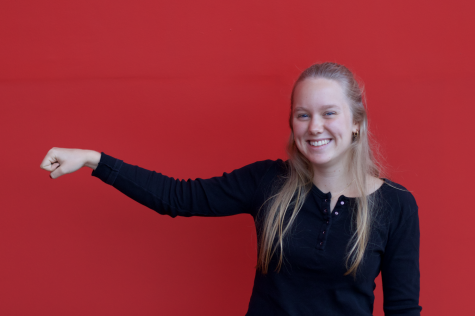Understanding the Slow Movement
Compare an action movie from the early 50s and 60s to an action movie from nowadays. I think you will be able to notice the difference in how fast the scenes change: in the past, a camera angle would stay for at least 10-30 seconds, while in modern movies, it could change every two seconds. Compare the amount of time that you are watching movies compared to the amount of time that you spend reading a book or playing games with your family. Compare the amount of time that you spend on your phone to the amount you spend off your phone. Now compare food and how society eats between the 19th and 20th century to the 21st century. In modern days, you can walk in a city and come across a multitude of fast-food restaurants, while this was not the case in the past. These quick stop-and-go food chains cause people to eat an unhealthy meal in under three minutes and then continue on with their busy lives.
When McDonald’s opened up a restaurant in Piazza di Spagna, Carlo Petrini (an Italian editor and political activist) protested against it. His protest was successful, and this action is, what many say, what sparked the Slow Movement. This movement isn’t a controlled organization, nor is it structured in any way. It is in fact upheld and maintained by individuals who understand and spread the ideals that come with Slow. This overarching theme has many different branches, which look at specific aspects of the movement. For instance, there is Slow Food, Slow Reading, Slow Travel, Slow Cities, Slow Living, and more. People’s lives have sped up as the world has been developing, and the movement recognizes this fact. Here I will explain three different branches of the movement, and how you, as a student, parent or faculty member, can apply the positive changes to your daily life.
Slow Food
Like I previously mentioned, nowadays, people spend less time eating, and they eat remarkably more unhealthily. And, I get it. We all lead busy lives and then eating becomes a minor activity you want to finish so that you can move on to the next task. This is why fast food has become increasingly more available and affordable over the years, and why fresh, organic foods have become more and more packaged. Thus, the purpose of the Slow Food movement is to bring back “cultural cuisine and in so doing preserve the food plants and seeds, domestic animals and farming within an ecoregion” (Slow Movement). The movement aims to counteract the effects of commercial and large-scale food production as well as those of the fast-food industry on people’s lives. The next time it’s late and you don’t know what to eat, don’t drive to the nearest McDonald’s or Burger King. Instead, prepare meals beforehand and store them in your fridge, or simply make yourself a BLT sandwich.
Slow Books / Slow Reading
My mom constantly tells me about her childhood, where a TV was an unaffordable luxury, and when someone had it, it would only be turned on 1-2 hours a week. If I look at the students in high school, I know that they watch television almost more than the time they spend eating or sleeping. I have to agree with the majority, however, that watching TV is fun and oftentimes exciting and exhilarating. Yet, it has turned into a passive activity. We lead busy lives and watching movies or a couple episodes of a new Netflix show doesn’t realize that many people anymore, especially when they decide they have to watch x in y amount of hours, or when they have TV on in the background while studying for their upcoming trigonometry test. This is when my mom walks into the room and tells me to pick up a book and read a little. Reading is something that reduces a person’s stress levels, it increases your creativity, inspiration, and motivation, it is entertaining, and it gives a person broader perspectives and a more open mind about the world. The Slow Books/Reading Movement wants society to get back into the love of reading books, simply so that we can improve our lifestyles and take a break. Reading isn’t something you have to write on your to-do list, but, if you take even 20 minutes out of your day to do it, you’ll be changing your attitude for the better.
Slow Living
The IB Diploma Programme is tough. It is a lot of work. Not only for students, but also for teachers and for other faculty members. Due to the fact that there is a lot of work to be done, people live fast lives. We eat, watch movies and communicate faster than ever. All those Tumblr quotes about “living in the moment” or “enjoying the present” are becoming more and more applicable to our daily lives. You watch a movie, but how much are you really taking it in? You have a deep conversation with your friends or family, but how present are you? How far are your thoughts drifting from the conversation? It is hard to rest your mind for just a few minutes and take a moment to breathe. Obviously, from this, the solution to slow down your life and take in what is happening is clear: connect. Practice mindfulness and meditation. Two minutes when you wake up or before you go to sleep can, over time, help to you see your fast life in slow motion.
For more information about the Slow Movement check out http://www.slowmovement.com/.

Rosanne has been a part of The Talon as an Entertainment writer, Features editor, and now as an Editor-in-Chief with Nadya. She has spent countless hours...









